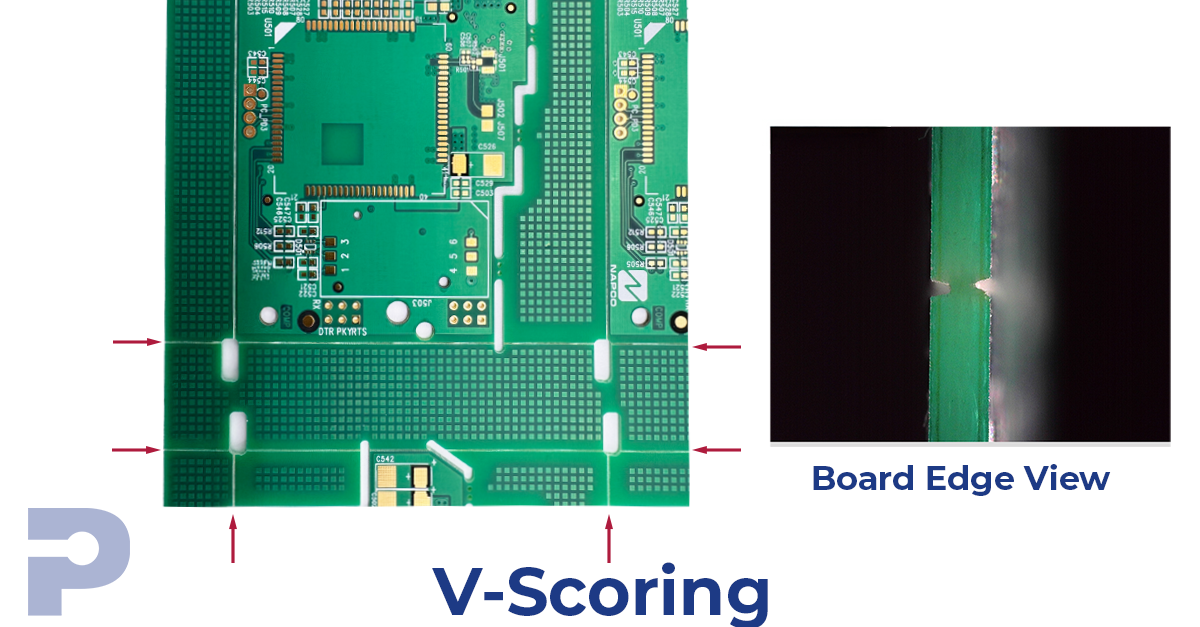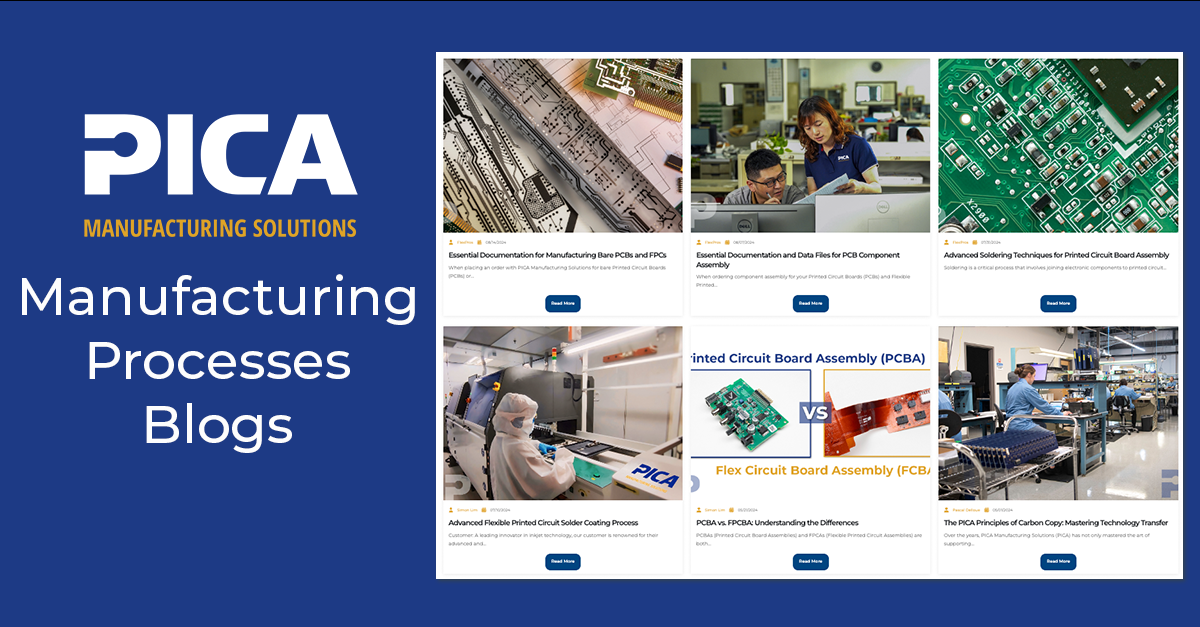
Printed Circuit Board (PCB) manufacturing involves precise processes, not just in design and component assembly but also in how the final boards are separated from their manufacturing panels. At PICA Manufacturing Solutions, we use various depaneling techniques to ensure efficiency, accuracy, and cost-effectiveness. The three primary methods—V-scoring, routing, and die cutting—each offer unique advantages depending on the application. Let’s break down when and why each is used.
V-Scoring: Efficient and Cost-Effective for Straight-Line Separations
What is V-Scoring?
V-scoring involves cutting shallow V-shaped grooves on both sides of a PCB panel, leaving a thin web of material that allows the board to be easily snapped apart after assembly. This method is best suited for boards with straight-line separations and high-volume production runs.
When to Use V-Scoring:
• When PCBs have straight, linear edges requiring separation.
• For high-density panelization, maximizing material usage.
• When cost-effectiveness is a priority, as V-scoring is faster and more economical than other methods.
• In applications where a clean break with minimal stress on components is acceptable.
Limitations of V-Scoring:
• Not suitable for complex or curved board shapes.
• Can leave a rough edge, requiring post-processing if smoother edges are needed.
• Creates some mechanical stress when snapped apart, which may not be ideal for fragile components.
Routing: Precision for Complex PCB Shapes
What is Routing?
Routing, also known as CNC milling, removes material along the PCB outline to create individual board shapes. It typically uses a rotating cutting tool to produce precise and smooth edges, allowing for intricate board geometries.
When to Use Routing:
• When PCBs have irregular shapes, including rounded or complex contours.
• In low- to medium-volume production, where precision is more important than speed.
• When smooth edges are necessary, reducing the need for post-processing.
• For stress-sensitive components, as routing applies less mechanical force than V-scoring.
Limitations of Routing:
• Higher material waste compared to V-scoring.
• Slower process, as it requires precise cutting along the board outline.
• Increased cost due to longer machine time and tool wear.
• In most cases, slots and mouse bites are designed together for panelization. After depaneling, these areas can leave burrs along the edges where the board breaks off the panel.
Want to dive deeper into PCB manufacturing?
From material selection to final assembly, our blog series on Manufacturing Processes offers expert insights to help engineers and buyers make informed decisions every step of the way.
Die Cutting: High-Speed Separation for Thin and Flexible Circuits
What is Die Cutting?
Die cutting (and die punching) uses a custom-shaped steel die to stamp out PCB shapes from a panel, similar to a cookie cutter. Die punching is commonly used for aluminum-based PCBs and for mass production of FR-4 boards. This method is ideal for high-speed production and works well with thin and flexible circuits.
When to Use Die Cutting:
• For high-volume production where speed is essential.
• When working with flexible PCBs or very thin materials that cannot withstand mechanical stress.
• When precise, repeatable shapes are required without tool variations.
• In applications where minimal burrs and debris are critical, such as medical or aerospace electronics.
• For aluminum-based PCBs, where punch dies are often used for quantities of 100–500 pieces or more.
• For FR-4 PCBs in high-volume runs, where die punching may be preferred for speed and consistency.
Limitations of Die Cutting:
• Higher upfront cost due to the need for custom dies.
• Limited flexibility if design changes are needed, requiring new tooling.
• Not ideal for rigid PCBs, as it is primarily used for flexible materials.
Choosing the Right Depaneling Method for Your PCB
The decision on which separation method to use depends on several key factors:

At PICA Manufacturing Solutions, we help our customers select the best depaneling method for their specific application, balancing performance, cost, and manufacturability. Whether you're designing rigid PCBs, intricate flex circuits, or high-volume consumer electronics, our expertise ensures a seamless transition from production to final assembly.
